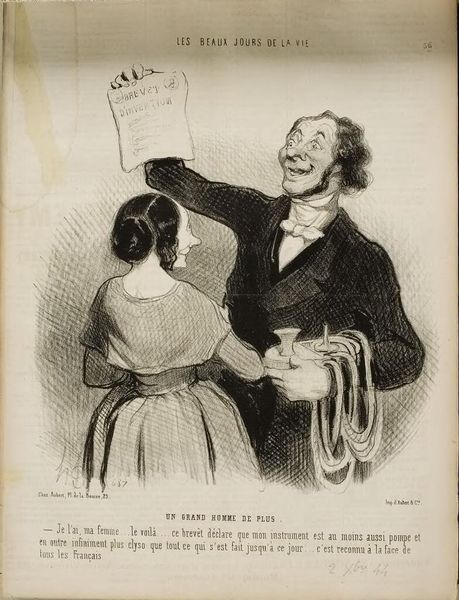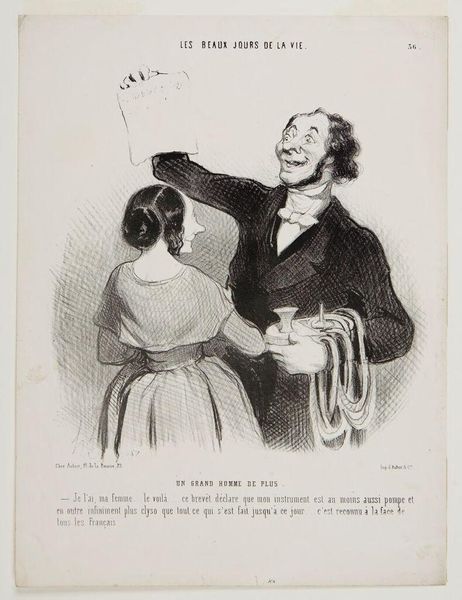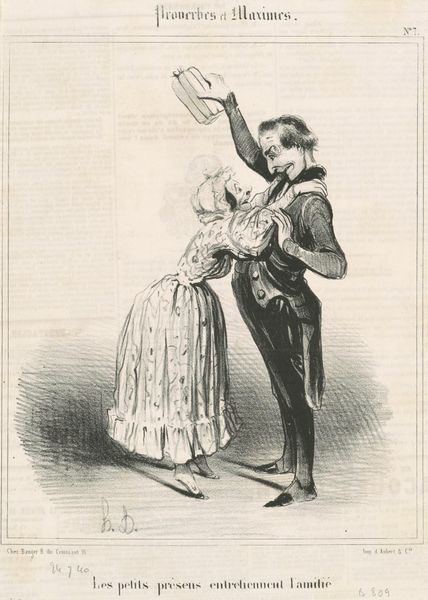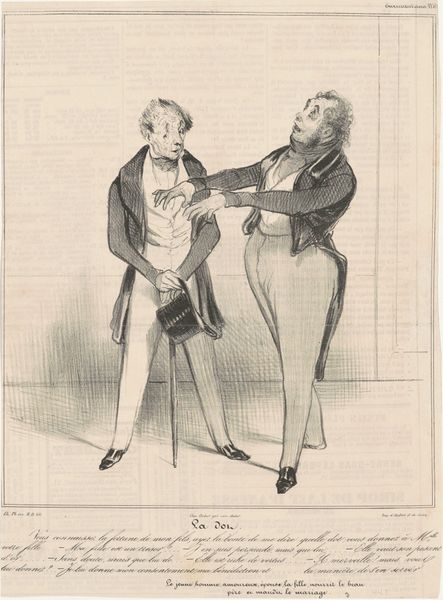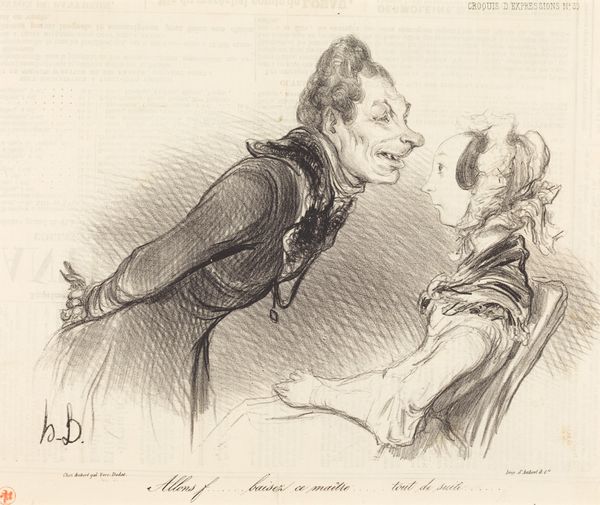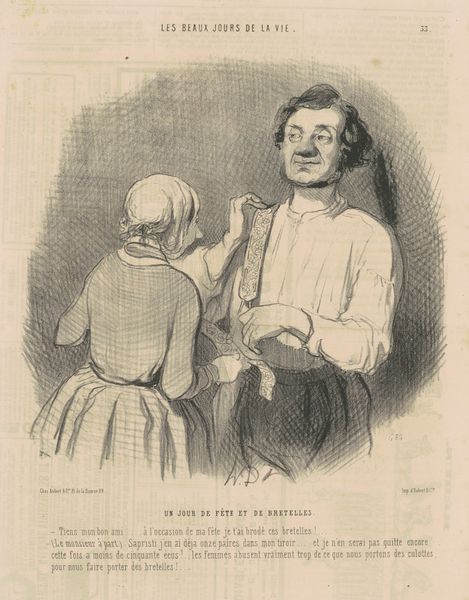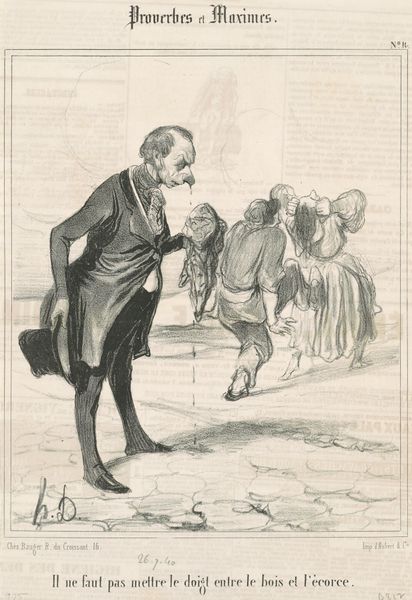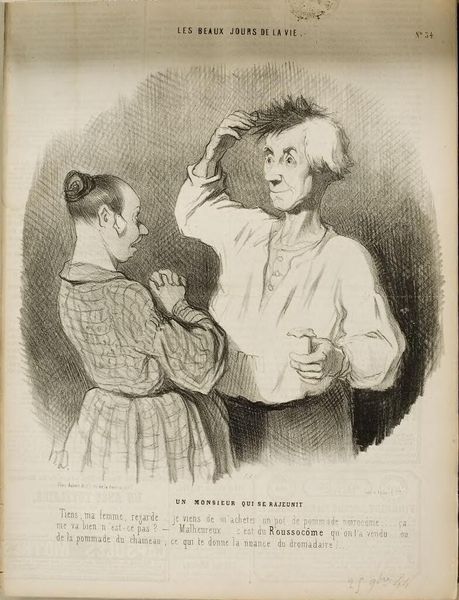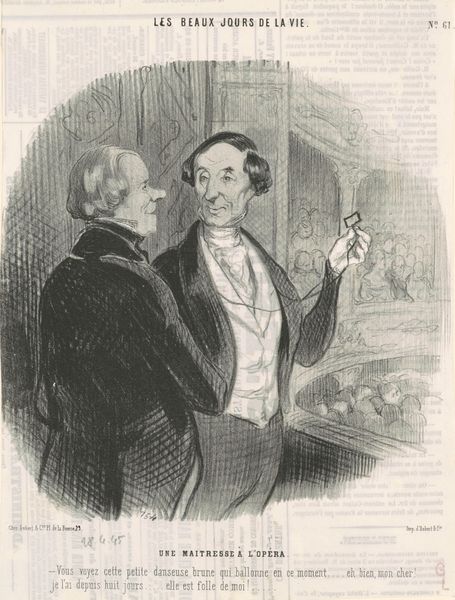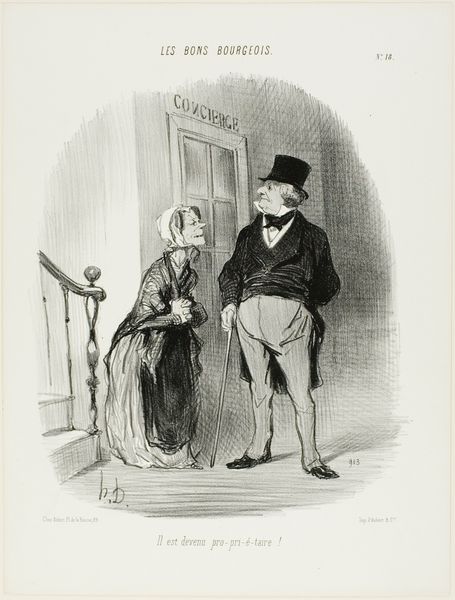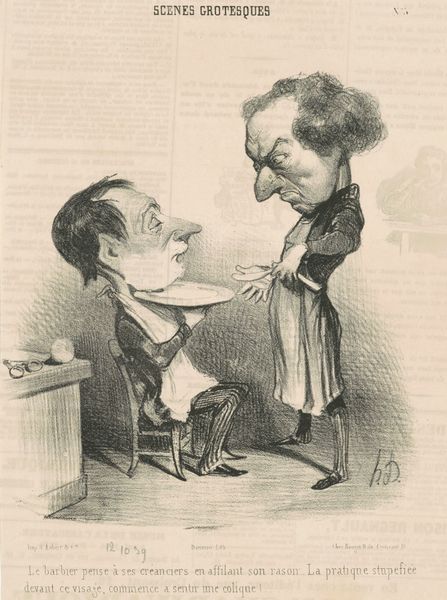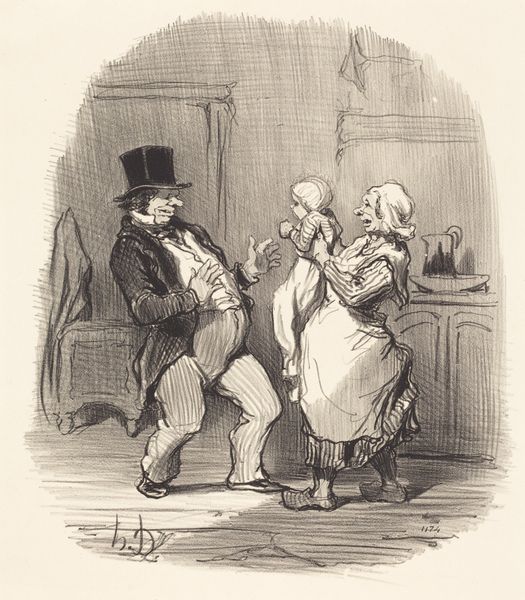
Another Great Man. “I have it in my hand, my dear... here it is in writing.... this document confirms that my invention is a well-pumped and infinitely more clysterized machine than anything invented thus far... all Frenchmen must accept that,” plate 36 from Les Beaux Jours De La Vie 1844
0:00
0:00
drawing, lithograph, print, paper
#
drawing
#
lithograph
# print
#
french
#
paper
#
pencil drawing
#
france
#
genre-painting
#
realism
Dimensions: 234 × 224 mm (image); 306 × 229 mm (sheet)
Copyright: Public Domain
Editor: Here we have Honoré Daumier's lithograph, "Another Great Man…," created in 1844. It’s fascinating how Daumier uses a relatively simple medium, print on paper, to depict such a complex scene. I’m immediately drawn to the figure’s boastful expression; what do you make of the social commentary embedded in this piece? Curator: Consider the process of lithography itself. It’s a method of mass production. Daumier, by choosing this medium, implicates the work in the very system it critiques – the relentless churning out of “great men” and their “inventions,” a critique of the burgeoning capitalist system of 19th-century France and its obsession with production. Editor: That's a compelling point! I hadn't thought about how the materiality of the work is linked to the critique it presents. Does the setting of the print impact the labor in creating it? Curator: Absolutely. Daumier's work often appeared in periodicals like *Le Charivari*. So think about the speed of production needed to meet those deadlines, the reliance on printmakers to realize his vision, the sheer volume of images consumed by the public. He’s not just creating an image; he's participating in a visual culture fueled by industrial advancements and capitalist desires. Where do we consider artistic genius versus mere worker in the manufacturing of prints? Editor: So the choice of lithography, with its implications of mass production, isn't just a neutral decision but a deliberate act of highlighting the mechanisms of celebrity and consumption... the creation of value and artistic license through printed means! It changes how I view the role of art making for Daumier. Curator: Exactly. It compels us to ask: Who benefits from this relentless production? Who is celebrated, and at what cost? Editor: Thanks! Looking at the materials and context helps to sharpen the focus of the artistic content.
Comments
No comments
Be the first to comment and join the conversation on the ultimate creative platform.
